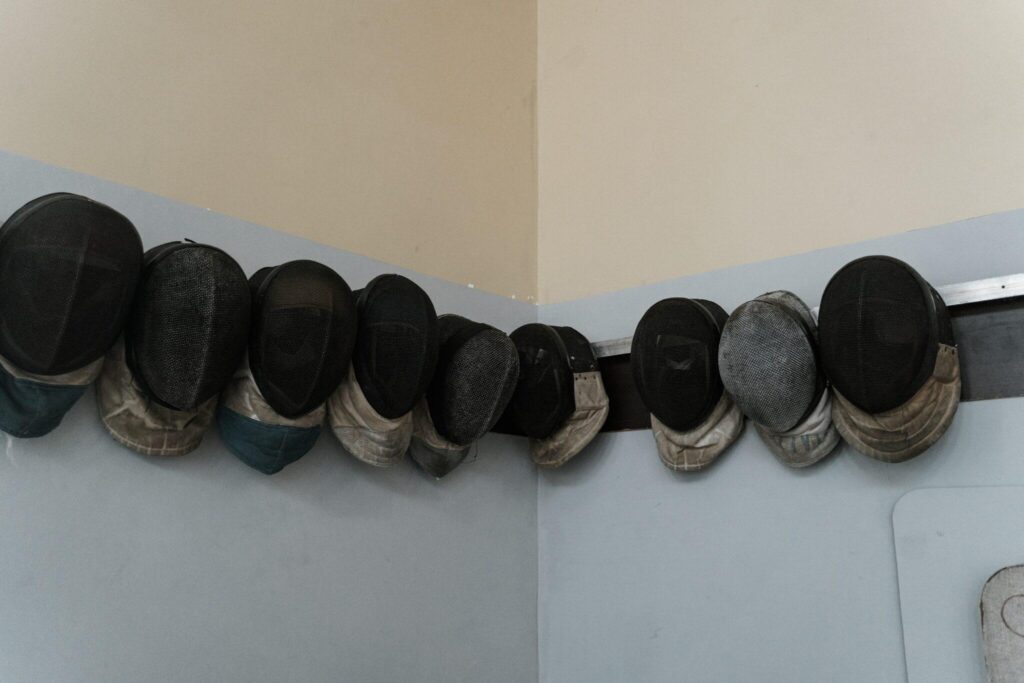Be Intentional About Your Open Sparring Times

Whether you call it randori, kumite, sparring, or touching hands, many martial arts provide space and time for students to explore the art in a less constrained environment. In my school we call this time “Open Floor”: it has typically been a weekly 2–3 hour block of time where students are invited to come and practice, spar, and otherwise explore together. There are teachers present but there is no formal class, it is open as the name suggests.
Open Doesn’t Mean Unguided
For sparring times to be meaningful and productive it is important that they still have intention and purpose. Consider why you’re there. Is it to create camaraderie and increase the relationships between students in the school or group? Is it to provide a space to work on techniques that were learned in class (or from other sources) that week? Is it to create a space for open and unconstrained martial exploration? Is it to pit your skills against better fencers and see how it goes? How competitive do you want it to be? How playful?
Be aware that the more open and undirected you allow a gathering to be, the more likely that it won’t be significantly impactful for very many. Clear purpose helps support your martial goals and your goals for the culture you want to create in your community.
Structure and Ritual
What structures and rituals will support your purpose? One sparring practice I ran for a long time began with a circle up where everyone shared what they were working on that night, and how they wanted to be both challenged and supported. Then at the end of the night we would circle again to share something we had learned. This format supported the purpose of this time to be focused on learning rather than egos.
I recently encouraged a school I was consulting with to make part of their “Fight Night” time specifically dedicated to martial games and scenarios that focused on the techniques and challenge areas they were working on in classes, with a spirit of experimentation over competition.
In our group we have different speeds and sparring conventions that everyone is oriented to and can select amongst their partners. Sometimes we divide the space by intention and put exercising or lower intensity work in one area, and higher intensity in another. This allows participants to place themselves in an area of the room that suits their particular needs.
Many different martial arts have traditional ways of invoking a sparring space with a particular set of constraints, goals, and intents, whether that is the dancing and playing space of a Capoeira roda, or the competitive but restricted play in Judo randori. The reality is that even if you have a completely undirected session there will be implicit rules and conventions in play. The question is if those rules are helping provide a space that has the biggest positive impact it can have.
Practice Generous Authority
Not taking up leadership of a practice gathering tends to leave the leadership up to whoever is the most forceful or proactive in the room, and that often won’t align with your purpose. I have certainly made this mistake myself in a desire to “give out ownership” I have instead allowed ownership to be taken over by individuals who might be working at cross purposes to the needs of the group. This kind of laissez-faire approach most often leads an open practice to become a competitive sparring session with more “see who’s best” energy than “make each other better” energy.
Take up the reins. Create a clear statement of purpose, some ground rules, and a format for your session. Your format can invite self-direction but make sure the parameters are clear and that you, or an appointed deputy, is there to make sure people are playing by the rules and with the intent you want.
Don’t lose site of the fact that a part of what people are looking for in a sparring time is to have fun and connect. Yet recognize that leaving everything open and loosey-goosey tends to only be fun for the most self-directed. Take some time with your group to be intentional about how you spend even your “open” times. Recognize that these are not times without purpose, they are times that have a different purpose. It’s worth defining and supporting it.
Study: The Art of Gathering
If you’re interested in more ideas on creating meaningful gatherings of all kinds, I recommend the book The Art of Gathering by Priya Parker. Priya shares many brilliant ideas for gatherings of all kinds and how to make them meaningful.
Enjoy your training!
Devon



Responses